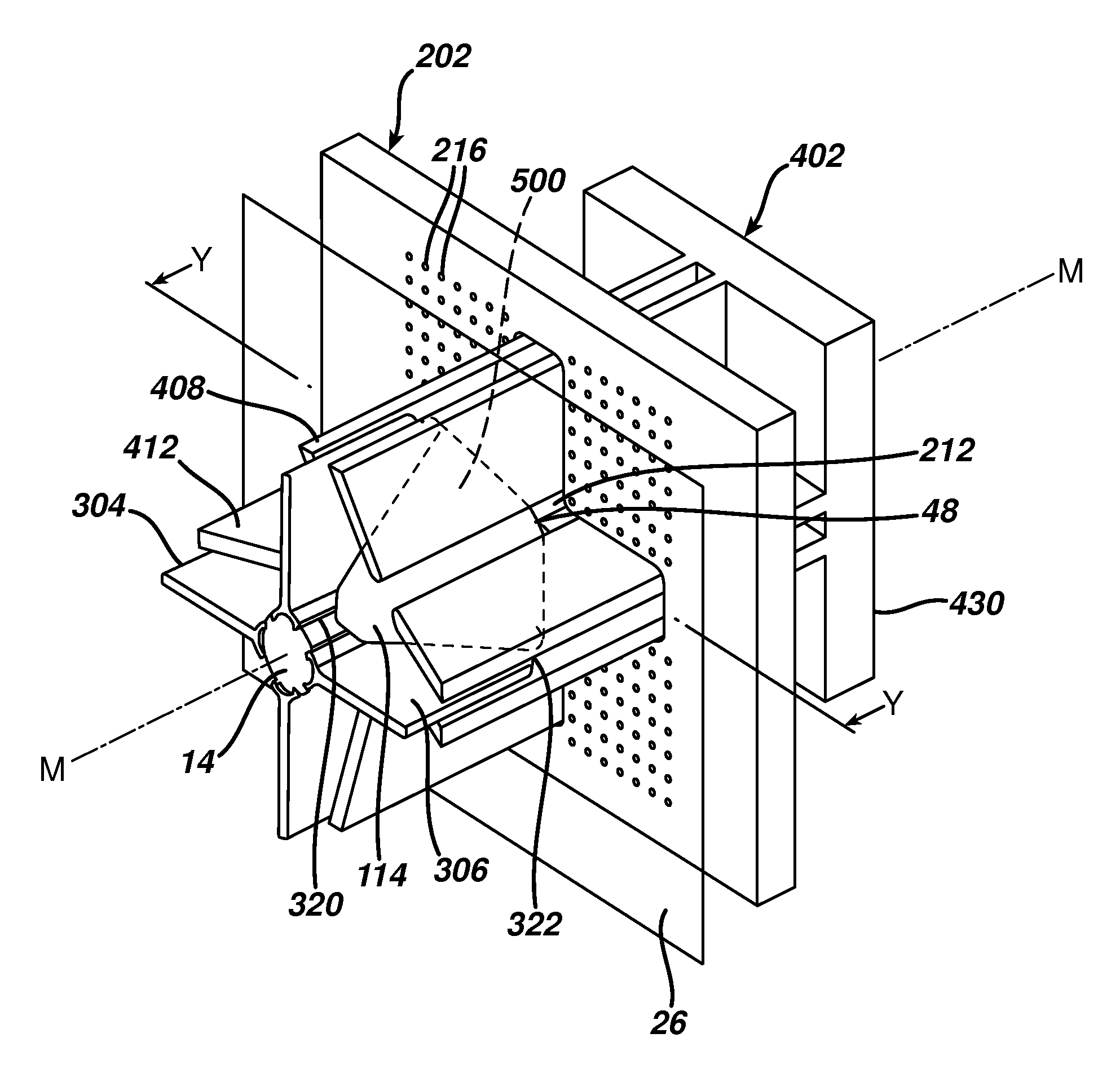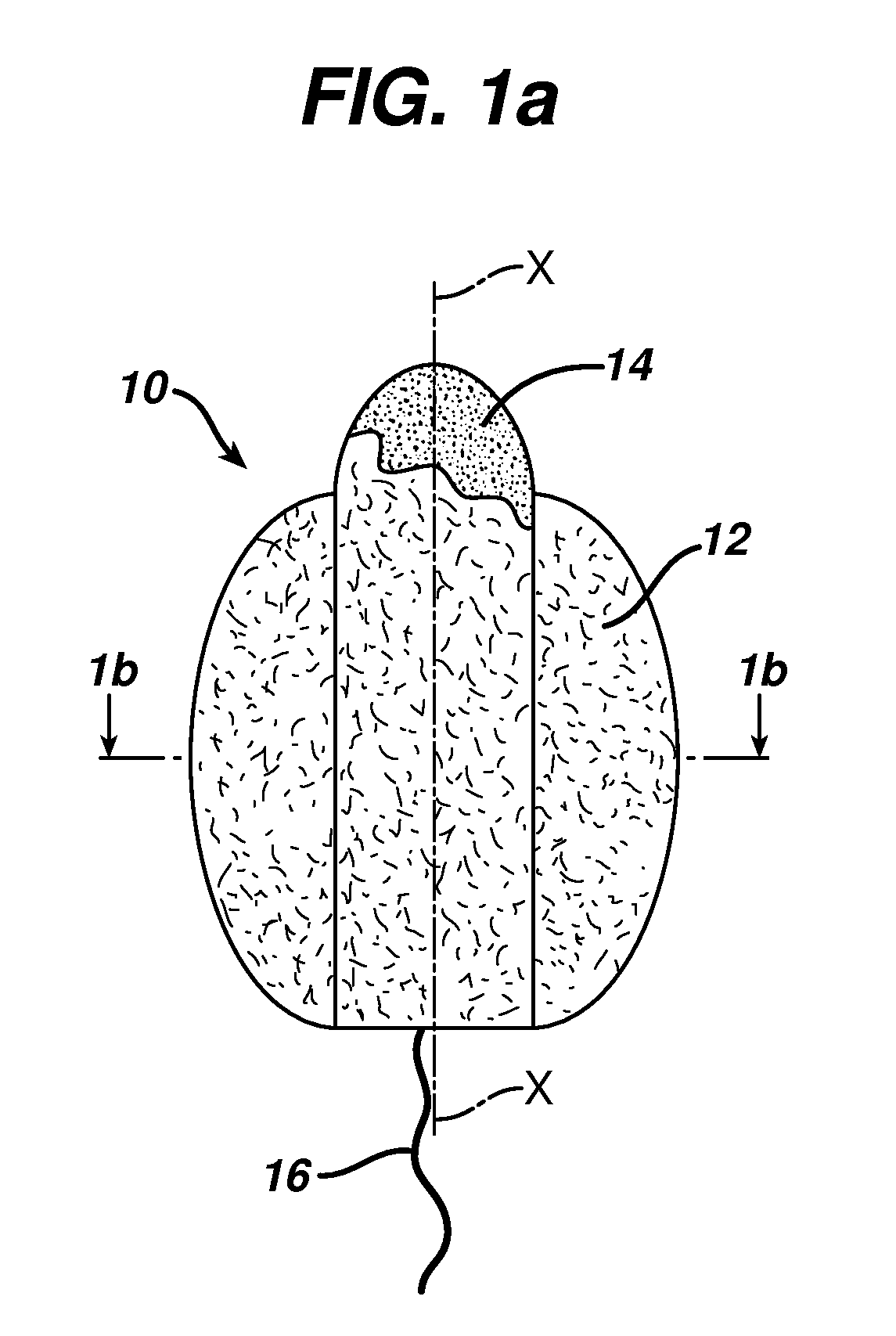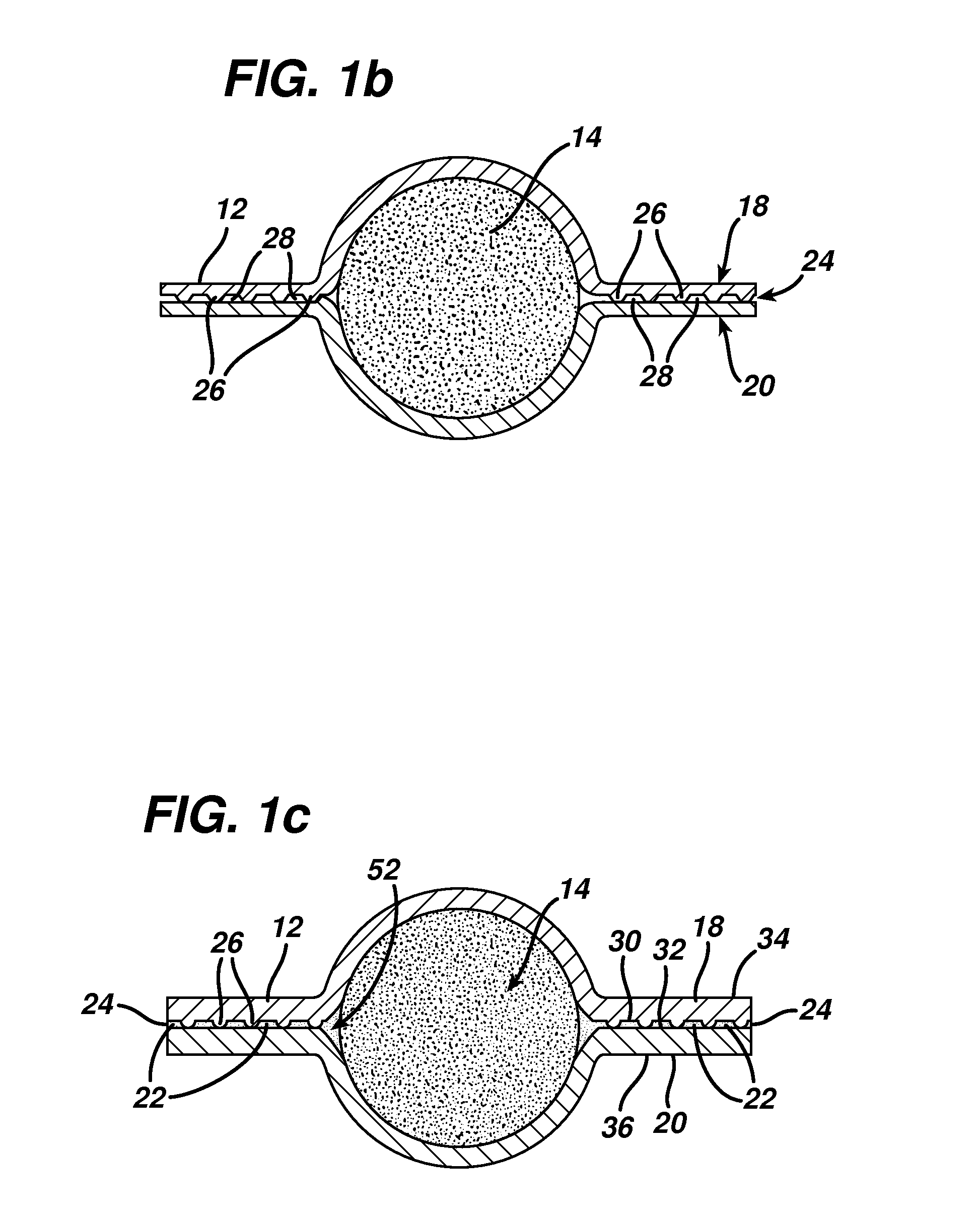Intravaginal device with fluid transport plates
a technology of intravaginal device and fluid transport plate, which is applied in the direction of packaging, packaging, packaging, etc., can solve the problems of inability to expand, and inability to immediately absorb fluid by compressed tampon, so as to reduce by-pass leakage and increase the contact area of the absorbent device
- Summary
- Abstract
- Description
- Claims
- Application Information
AI Technical Summary
Benefits of technology
Problems solved by technology
Method used
Image
Examples
Embodiment Construction
[0057]As used herein in the Specification and the Claims, the term “bodily fluid” and variants thereof mean bodily exudates, especially liquids that are produced by, secreted by, emanate from, and / or discharged from a human body.
[0058]As used herein in the Specification and the Claims, the term “fluids” and variants thereof relate to liquids, and especially bodily fluids.
[0059]As used herein in the Specification and the Claims, the term “sheet” and variants thereof relates to a portion of something that is thin in comparison to its length and breadth.
[0060]As used herein in the Specification and the Claims, the term “parallel plate” and variants thereof relates to a system of at least two relatively parallel sheets that are capable of moving fluids through inter-plate capillary action. The individual “plates” in the system may be flexible and / or resilient in order to move within their environment. However, they may be maintained in a substantially facing relationship with relatively...
PUM
| Property | Measurement | Unit |
|---|---|---|
| capillary suction pressure | aaaaa | aaaaa |
| contact angle | aaaaa | aaaaa |
| contact angle | aaaaa | aaaaa |
Abstract
Description
Claims
Application Information
 Login to View More
Login to View More - R&D
- Intellectual Property
- Life Sciences
- Materials
- Tech Scout
- Unparalleled Data Quality
- Higher Quality Content
- 60% Fewer Hallucinations
Browse by: Latest US Patents, China's latest patents, Technical Efficacy Thesaurus, Application Domain, Technology Topic, Popular Technical Reports.
© 2025 PatSnap. All rights reserved.Legal|Privacy policy|Modern Slavery Act Transparency Statement|Sitemap|About US| Contact US: help@patsnap.com



